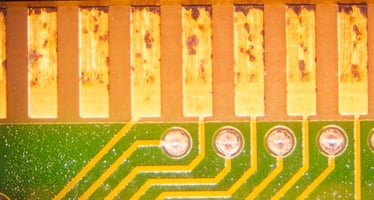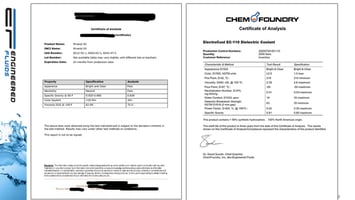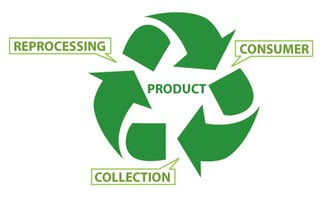Mineral and white oils are often considered for use as heat transfer fluids for immersion cooling...
What are Dielectric Fluids?
A dielectric material refers to a substance that’s a poor electrical conductor but acts as a supporter for electrostatic fields. In practice these materials are naturally solid, and examples include glass, mica, plastic, oxides from various metals and porcelain. Dielectric fluids refers to dielectric materials in liquid form. The main purpose of dielectric liquid is to prevent and quench electric discharges rapidly, and are used as insulators in high electric voltage applications such as capacitors, transformers, switchgear, high voltage cables, etc. The function they provide is electric insulation through suppressing arcing and corona, plus they serve as dielectric coolant. A good quality dielectric liquid should contain a high thermal stability, a high dielectric strength and inertness against the construction of non-flammable, low toxicity and good heat materials at low cost. Dielectric liquid is a self-heating product and when an electric breakdown occurs, the discharge channel leaves a permanent conducive trace in the fluid. These electric properties are strongly influenced through dissolved gases such as carbon dioxide, oxygen, dust fivers, moisture and ionic impurities. The electric discharge can cause the production of impurities which can degrade the dielectric’s performance.
Dielectric Fluids and EDM
Dielectric fluids are used in Electrical Discharge Machining – EDM as Deionized water and this helps to improve their performance. They also serve the following purposes;
- They work as semiconductors between the workpiece and energized wire in order to maintain a controlled and stable condition for ionization.
- They can be chilled enough to keep the workpiece, worktable, wire and fixtures at a steady temperature. This enables a limit to the thermal growth of the machine and workpiece so as to hold them in tight tolerances.
- They act as flushing agents to wash away all of the ashy debris that were created when the cutting occurred.
Now, when the machine is distilled, commissioned and deionized, the low conductivity is used first. Then tap water can be passed through the bottle in order to filter out all of the other contaminants and to neutralize the particles with the electric charge. This water will then circulate through the micron paper filter so as to remove all the other remaining particles. Most of these machines are usually equipped with 5-micron filters.
What is dielectric hydraulic fluid?
This refers to hydraulic fluids or dielectric hydraulic oil that is formulated to perform in specified hydraulic systems that require anti-rust, anti-wear, anti-oxidant, demulsibility and anti-form properties. The specific applications include in power utilities such as mobile, aerial lift buckets and stationery hydraulic systems. These are situations where the electrical insulation safety is paramount. The dielectric hydraulic oil ensures a high inhibition of the machines against moisture that leads to rusting in both seawater as well as fresh water. The incorporation of the super high viscosity into the formula increases the index of viscosity past the synthetic levels.




